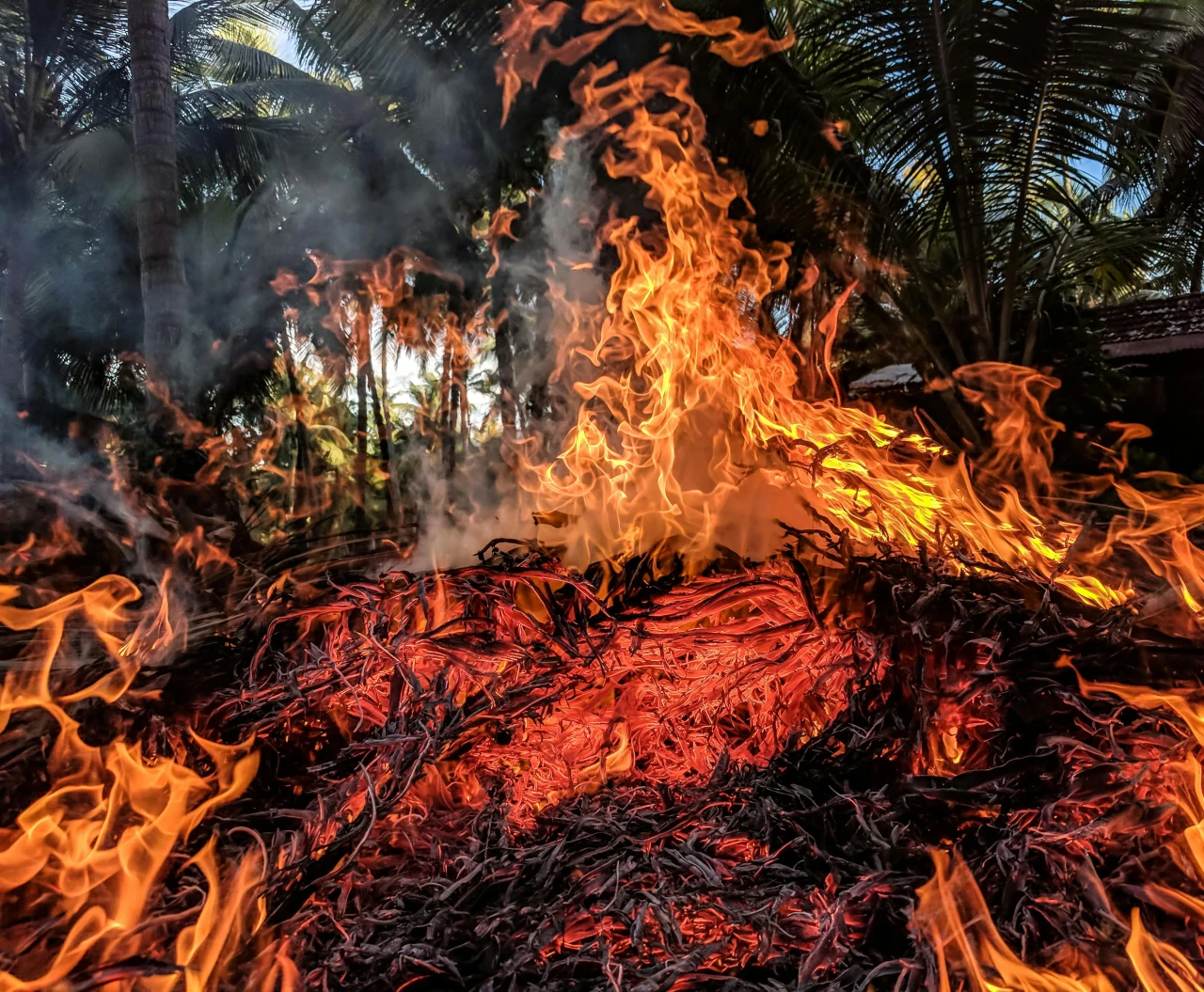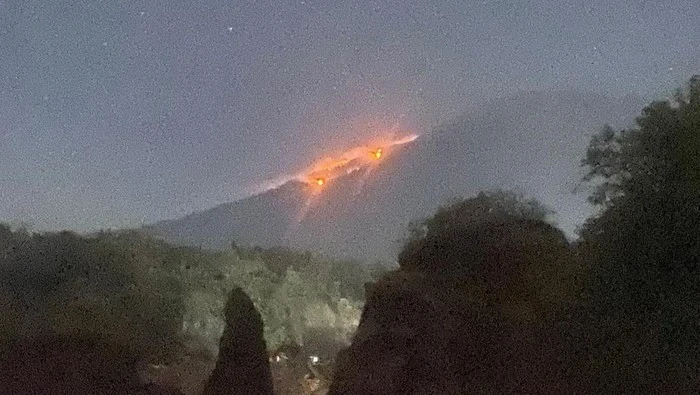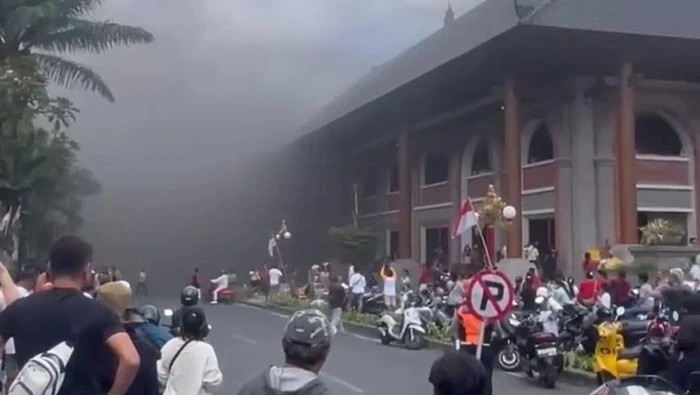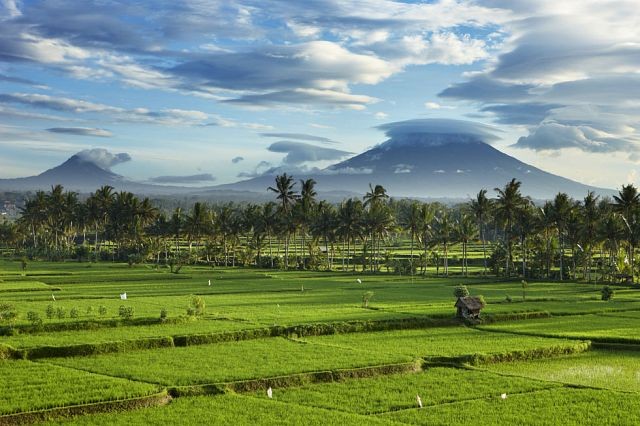
A major fire has broken out on the western slope of Mount Agung. The fire is not yet extinguished. The blaze is currently at an altitude of 2,300 meters above sea level. Residential areas, located 4-5 kilometers from the fire’s origin, remain safe for now.
Fires on the western slope of Agung are a rare occurrence. Typically, forest fires happen during the dry season, but they usually occur on the northern slope of the volcano, particularly in the Kubu area. This is the first such case in recent years.

The fire may have been caused by extreme heat and the friction of tree branches due to strong winds. The fire is currently being monitored and continues to spread toward the summit of the mountain. If the fire turns toward populated areas, authorities are prepared to create firebreaks or trenches to prevent its further spread.
“Last night, the fire was clearly visible from the Besakih area. However, this morning, due to fog, it’s not as noticeable. Smoke is still rising from the fire hotspots,” said the head of Karangasem Regency, Ida Bagus Ketut Arimbawa.
“We’ve coordinated action plans with all parties, including the village head and provincial authorities, to focus efforts if necessary,” Arimbawa added.
For now, authorities continue to monitor the natural disaster and promise to keep the public informed of further developments.
Mount Agung is currently closed to tourists, and the fire was first spotted by a group of priests heading to the summit to conduct a ceremony. I Wayan Sulatra, one of the witnesses to the fire, said he tried to fight the fire but was unsuccessful.
“I tried to extinguish the fire with water from my supplies and attempted to beat the flames with a stick. But I couldn’t put it out. Afterward, we reported the fire to the public relations department of the nearest temple,” he said.
Due to the fire, climbing the mountain is now prohibited, even for those wishing to conduct ceremonies at the summit.
Fighting forest fires is always a complex and resource-intensive process, and if the fire’s spread is limited and doesn’t threaten populated areas, it’s often simpler to wait for it to burn out on its own. In this case, the deep ravines and gorges that cut through Agung’s slopes could serve as natural barriers to the fire.


You can add one right now!